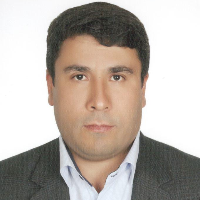Estimates of Variance Components and Heritability of Seed Yield and Yield Components in Commercial Sesame Cultivars at Different Levels of Irrigation and Mycorrhizal Fungi
One of the methods that has been used in recent years to deal with dehydration and drought stress in many plants is the use of root symbiotic fungi (mycorrhiza). Ecological and physiological studies have shown that mycorrhizal symbiosis often results in better absorption of water and nutrients from the soil. Due to the importance of oilseeds and especially sesame, the study of commercial cultivars in terms of genetic variation, phenotypic components and heritability of traits is important. Sesame due to its high oil content (52-42 Percentage) and its proper quality (low cholesterol and the presence of some antioxidants) play an important role in human health and on the other hand the plant tolerates dehydration and drought stress. Currently, water stress is the most important and common factor in reducing yield in arid and semi-arid regions. High heritability for a trait indicates that the major part of phenotypic variance is due to genetic variance, while in low heritability, genetic factors have a smaller share in phototypic diversity. The aim of this study was to estimate the variance components and heritability of grain yield and related traits in 8 commercial sesame cultivars under different irrigation conditions.
In order to investigate the genetic diversity and the heritability of grain yield and yield components in sesame, 8 commercial cultivars were studied in three separate experiments using factorial split plot based on randomized block complete design with three replications in research field of Agricultural Research Center, West-Azerbaijan in 2015-2016 and 2016-2017 cropping seasons. The main plots (factor A and B) consisted of three different levels of irrigations (normal irrigation: irrigation after 70 mm evapotraspiration of crop or ETc, moderate drought stress: irrigation after 90 mm ETc and severe drought stress: irrigation after 110 mm ETc) and factor B included three levels: two species of mycorrhiza fungi Glomus mosseae, Glomus intraradices and non-inoculated (control). Sub plots (factor C) consisted of eight commercial cultivars of sesame.
The results of analysis of variance showed that the effect of environment, genotype and the interaction of environment × genotype on most of the studied traits were significant. In optimal irrigation regimes, moderate and severe drought stress under inoculation and non-inoculation conditions with mycorrhiza, the highest genetic variance was observed in biological yield, number of seeds per square meter and seed yield, respectively. The highest heritability in optimum irrigation conditions without mycorrhiza inoculation of traits (seed yield and number of grains per capsule), in optimum irrigation conditions and inoculation with mycorrhiza (both two species) (seed yield and 1000 seed weight), in moderate drought stress conditions and no inoculation with mycorrhiza (seed yield, 1000 seed weight and number of seeds per capsule), under moderate drought stress and inoculation with mycorrhiza G. mosseae (1000 seed weight and number of grains per capsule), under moderate stress conditions and inoculation with mycorrhiza G. intradices (seed yield, 1000 seed weight and number of grains per capsule), under severe drought stress conditions and without inoculation with mycorrhiza (stem diameter and 1000 seed weight), under severe drought stress conditions and inoculation with mycorrhiza G. mosseae (stem diameter, number of seeds per capsule and number of seeds per square meter) and in conditions of severe drought stress and inoculation with mycorrhiza G. intraradices (stem diameter, number of seeds per square meter and 1000 seed weight) were observed. Seed yield, biological yield and seed yield components had high genetic gain and genetic advance in all three different irrigation conditions. Among the components of grain yield, considering that the heritability of number of seeds per capsule and 1000 seed weight in all three different irrigation conditions is higher compared to the number of capsules per plant, so selection through number of seeds per capsule and 1000 seed weight to increase seed yield will be more efficient.
Therefore, commercial sesame cultivars that have more seeds per capsule and a 1000 seed weight can be used in breeding programs to produce cultivars with high seed yield. According to the information of this study, only general heritability can be calculated, but since many studies on commercial sesame cultivars in interaction with different conditions of irrigation and inoculation and non-inoculation with mycorrhiza have not been done, so this study can useful for researchers.
-
Evaluation of diversity for yield and morphological traits in maize lines (Zea mays L.) under optimum and zinc deficiency conditions
Maryam Harati Rad, Nafiseh Mahdinezhad *, , Barat Ali Fakheri, Mitra Jabbari, Sorour Arzangh
Journal of environmental stresses in crop sciences, -
Salinity stress tolerance in Iranian spring wheat cultivars during germination
Ronak Talebi Qormik, Hadi Alipour*,
Iranian Journal of Seed Research,



